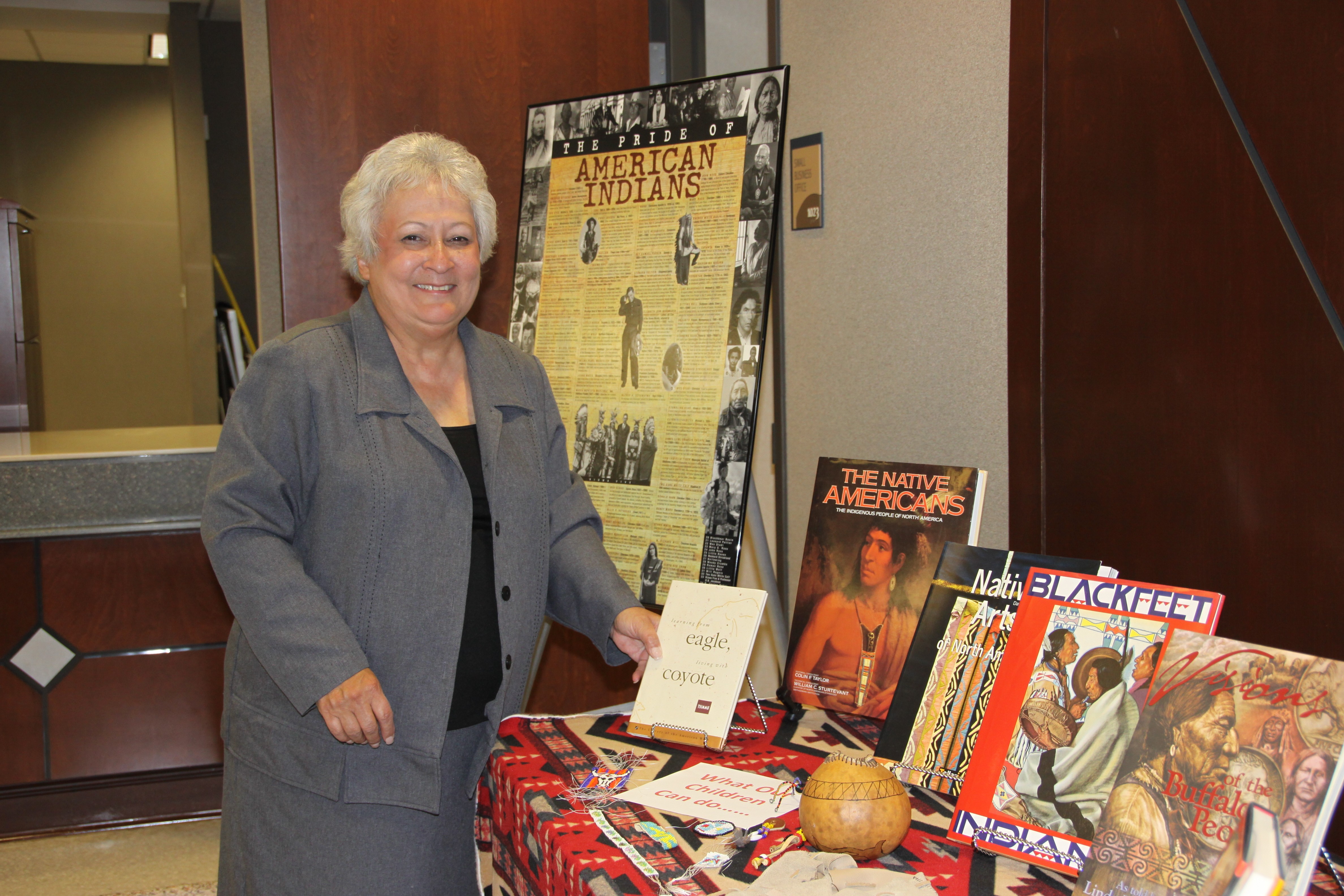
REDSTONE ARSENAL, Ala. - If you look hard enough and ask questions, you can probably find someone with a rich background in Native American Heritage in every organization. U.S. Army Space and Missile Defense Command/Army Forces Strategic Command is no exception.
Theresa Morris, aka "Little Fox," is a registered member of the Lakota Sioux, and a secretary in the G2, USASMDC/ARSTRAT. She shares the same Lakota Sioux heritage of famous names such as Sitting Bull, Crazy Horse and Red Cloud.
"My mother and grandmother lived on the Lower BrulAfA Indian Reservation in southern South Dakota," Morris said. "My grandmother named me 'Little Fox' because she said that I was very good at snooping around and could run very fast."
Morris spent her early years visiting the reservation during summer breaks and experiencing all the flavors of Native American life.
"I guess that one of my earliest memories of my Native American Heritage was visiting my family on the reservation," said Morris. "I remember that my grandmother had a big round barrel that was in the middle of the kitchen. It was filled up once for bath time, and I ALWAYS insisted on taking the first bath," Morris said with a smile. "She also had an outhouse, which is always an adventure, and a definite change from what I was used to."
Not everything was strange and different, Morris said. Her summer visits to the Lower Brule reservation always included such things as dancing.
"We would go to the various Lakota dances, like the feather dance, and then we would also go to what was called the 'white dance,' which back in the 50's was like a regular sock hop with modern music," she said. "They were both a lot of fun."
Although the visits to the reservation are few and far between now, Morris still owns 56 acres of land in South Dakota on Cheyenne River Indian Reservation, the fourth largest reservation in land area in the United States. The reservation was created in 1889 following the defeat of the Lakota by the United States in a series of wars in the 1870s.
"I'll pass the land on to my children someday just as it was passed on to me," said Morris. "The land is our little slice of tangible heritage that we can still hold on to. Should family decide to sell the land in the future, it can only be sold back to the reservation," she said.
Morris really became interested in her heritage in her early 20s after attending a Wyoming Pow Wow, an event where both Native American and non-Native American people meet to dance, sing, socialize, and honor American Indian culture.
"I met so many people and really experienced the costumes, music, crafts, beading and cooking while I was there. I couldn't help but think, 'This is me. I need to know more about this because it's a part of who I am,'" she said.
Experiences such as these led Morris to begin reading and studying Native American history.
"Years ago, I was working for the Corps of Engineers and during a women's history month event I happened to learn about a Comanche woman named LaDonna Harris, who later went on to work in the White House. I became intrigued with her and read more about her fascinating story," Morris said. "She founded a group called Americans for Indian Opportunity and it has always been a desire of mine to hear her speak and meet her in person."
Reading and studying is just one aspect of Morris' commitment to her heritage. She treasures the paintings her mother worked on and continues to share her beading techniques with family and friends.
"I've made it a point to teach beading techniques to my fourteen grandchildren," she said. "I've just started making bowls, instruments and dipping spoons out of gourds and hope to share that with them as well."
Many years ago, Morris recalls being told that Chief Red Cloud, a war leader of the Oglala Lakota Sioux, and one of the of the most capable Native American opponents the United States Army ever faced, is a distant cousin and that prompted her to begin researching her family tree.
"It's important to know your family history," Morris said. "One of the best things I have done is researching my family tree. It's a great reminder and connection to my Native American heritage."
Deborah.erhart@us.army.mil

Social Sharing